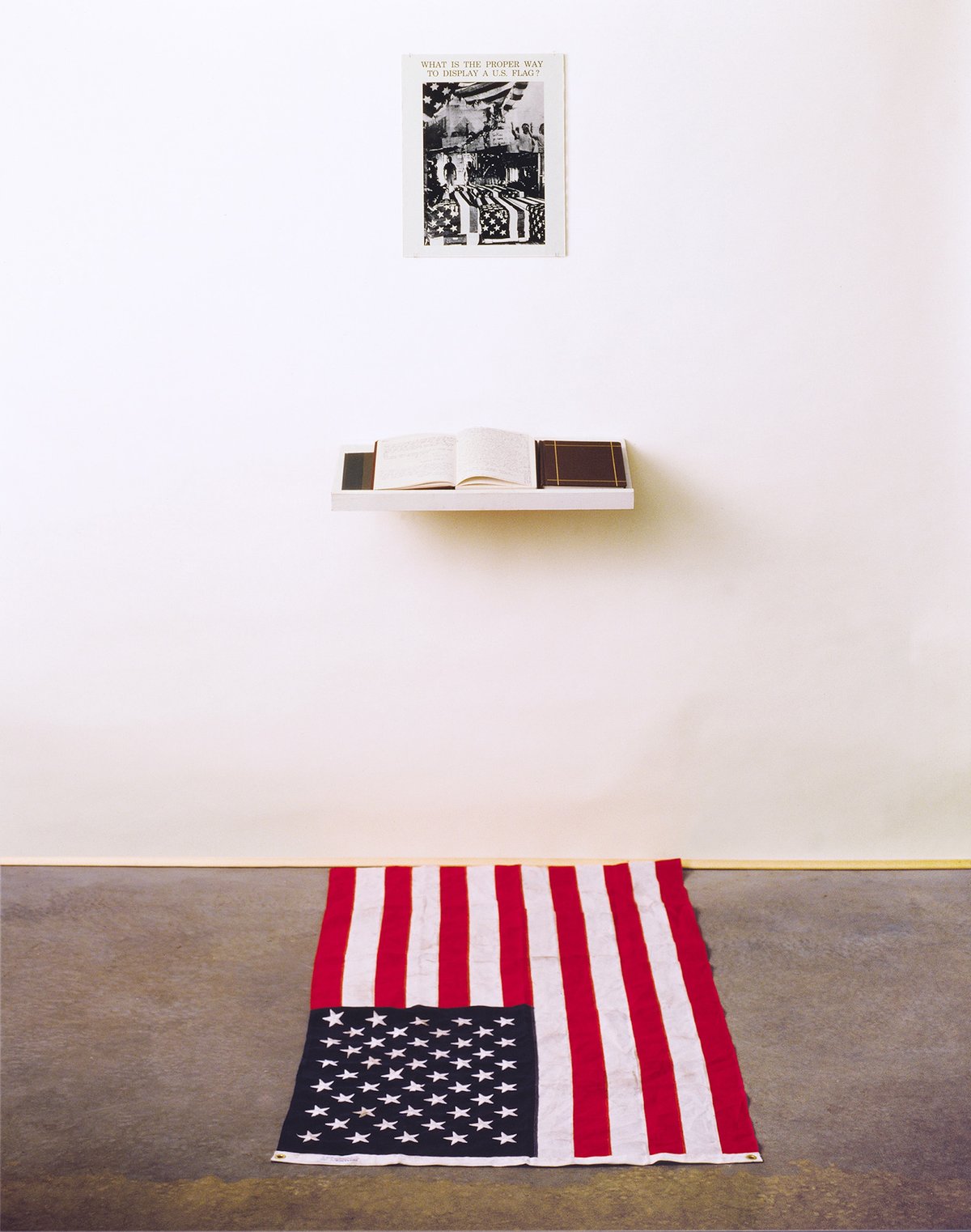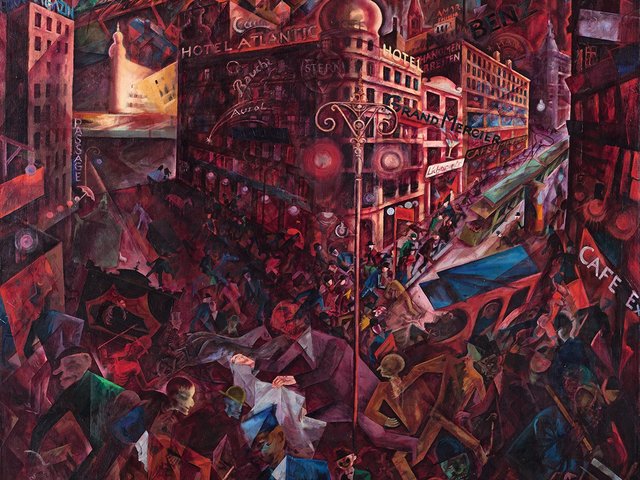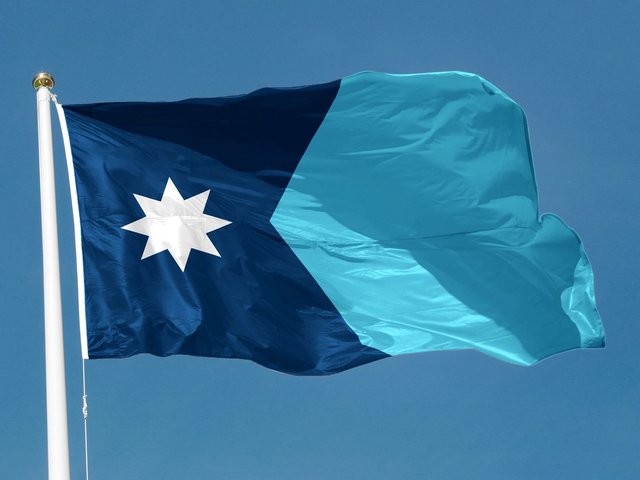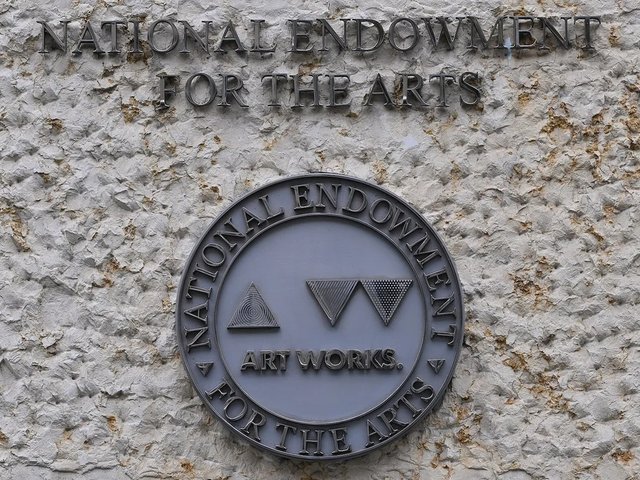Americans are deeply weird about their flag. No other country in the world uses its flag the way Americans do. One hundred-foot-long long American flags waft over gas stations next to highways in the middle of nowhere. American flags are flown on garages in suburbs. They sprout on poles in front of pizza shops in Brooklyn. They are unfurled on entire football fields. They fly off the back of fire trucks. They advertise chocolate chip cookies. American flag pins and pens. Flag underwear. Flags on shopping bags.
While many in the US fetishise the flag and it is ubiquitous, it is also the flag that flew over the Supreme Court that ruled in the 1857 Dred Scott decision: “There are no rights that a black person has that a white man is bound to respect.” It was the flag that the US Cavalry carried in to battle as it committed genocide against the Indigenous population. In 1925, around 50,000 Ku Klux Klansmen marched through Washington, DC carrying them. It is the flag of the only country that has ever dropped nuclear bombs on civilian populations. Millions in the US and around the world hate this flag and the country it represents.
It is because of America's obsession with its flag and the horrors of this empire that Jasper Johns, Faith Ringgold, Robert Longo, Hans Haacke, Hank Willis Thomas, Pope.L, Leon Golub and other artists use the flag in our work.
On 25 August, President Trump promulgated an executive order “Prosecuting Burning of the American Flag”. He and his lawyers know that this order is unconstitutional. In addition to the obvious attempt to suppress dissent, issuing this edict also declares Trump’s open contempt for the rule of law and is an assertion that his authority, and that of the executive branch, is the law of the land.
In 1989, the Supreme Court ruled in Texas v. Johnson that flag burning was symbolic speech, protected by the First Amendment. Immediately following this, Congress passed new legislation, the Flag Protection Act of 1989 (legislation which in part contained wording to specifically outlaw a work of mine), to attempt to reverse that decision. I and others burned flags on the steps of the Capitol, defying that law. In US v. Eichman (1990), the Supreme Court again ruled that flag burning was speech protected by the First Amendment.
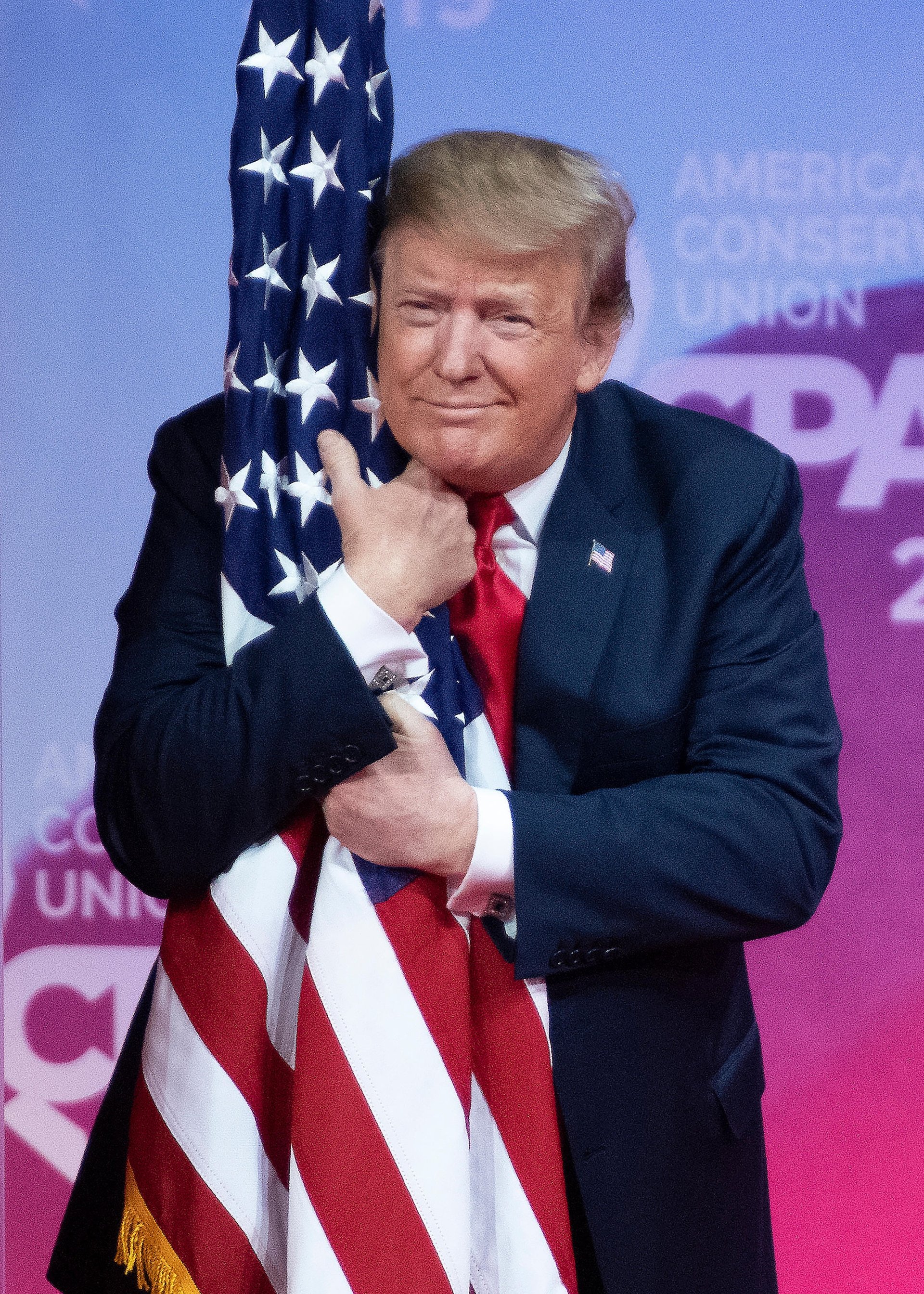
US president Donald J. Trump hugs the American flag as he arrives to speak at the Conservative Political Action Conference in March 2019 Credit: Ron Sachs/CNP/AdMedia Photo via/Newscom/Alamy Live News
Trump is fully aware that his order flies in the face of the law. At the press conference announcing it, he said: “Through a very sad court, I guess it was a five to four decision, they called it freedom of speech.”
Executive orders don’t remove constitutional rights. The order is a directive, not a law. And the order acknowledged the unconstitutional nature of what Trump is aiming for, stating in part: “To the maximum extent permitted by the Constitution, the attorney general shall vigorously prosecute those who violate our laws in ways that involve desecrating the American flag, and may pursue litigation to clarify the scope of the First Amendment exceptions in this area.” In other words, the Justice Department will charge protesters burning a flag with "incitement to riot”, “disorderly conduct” or whatever else the prosecutors dream up and see if protesters can get the courts to recognise that it is government overreach that infringes on their free speech. These arguments were settled in the previous Supreme Court flag burning cases, but Trump is ordering the Justice Department to ignore these precedents.
In the response book that was part of my work What is the Proper Way to Display a US Flag? (1988), one person wrote: “I am a German girl. If we Germans would admire our flag as you all do, we would be called Nazis again.”
Trump wishes to control the use of national symbols. His order reads: “Our great American flag is the most sacred and cherished symbol of the United States of America, and of American freedom, identity and strength…My administration will act to restore respect and sanctity to the American flag”.
Trump wants to use the flag as a club to clamp down on the seething discontent in this country and forge a nationalism that he hopes will cover over the profound oppression and divisions at the heart of America. He’s doing it as part of consolidating fascism in America. There is a precedent for this president.
German fascism and the flag
On 12 March 1933, the German President von Hindenburg and Adolf Hitler issued a decree that the old German imperial flag was to be flown together with the swastika flag. “These flags…connect the glorious past of the German Empire to the powerful rebirth of the German nation,” it read. “Together they embody the power of the state and the inner solidarity of the national circles of the German people!”
On 19 May 1933, the Nazi government prohibited the “symbols of German history, of the German state and of the national revolution from being publicly used in a way that was likely to damage the feeling of dignity of these symbols”. The Nazis were acutely aware of the importance of symbols to their efforts to Make Germany Great Again.
By prohibiting critique using the flag, his fiat compels patriotism and suppresses political dissent. By unleashing the Justice Department to prosecute people for exercising their rights, this order rips the First Amendment out of the Constitution.
It is part of a broader effort by this regime to censor and control culture. The White House is demanding the right to review the content and signage at Smithsonian museums (effectively the US national museum system), pushed directors to resign, replaced the board of the Kennedy Center and has effectively eliminated federal support for the arts, TV and radio. Criminalising political dissent and shredding the First Amendment is a big leap towards fascism. It is truly dangerous, but it is also desperate. Trump’s policies are deeply unpopular with large sections of society. Despots and tyrants outlaw dissent and try to compel respect for their nation, but these actions lead to more unrest.
Hours after Trump issued his executive order, a courageous veteran, Jay Carey, burned an American flag in DC in an act of protest. Later that week, the artist Michelle Pred posted a video on Instagram of her burning an American flag. These actions are exactly the defiant spirit that is needed now and it should spread.
Alongside the growing resistance and protest percolating in Los Angeles, Washington, DC, Chicago and beyond, artists and cultural workers are planning a nationwide cultural celebration of art against fascism and censorship. Fall of Freedom begins 21 November. Join us.
- Dread Scott is an artist based in New York


